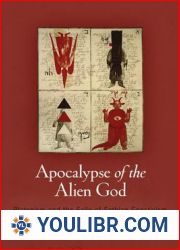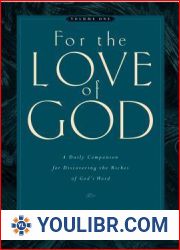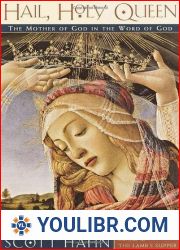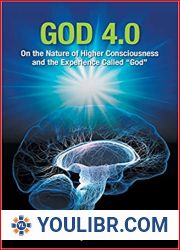
BOOKS - Apocalypse of the Alien God: Platonism and the Exile of Sethian Gnosticism

Apocalypse of the Alien God: Platonism and the Exile of Sethian Gnosticism
Author: Dylan M. Burns
Year: February 7, 2014
Format: PDF
File size: PDF 2.2 MB

Year: February 7, 2014
Format: PDF
File size: PDF 2.2 MB

Apocalypse of the Alien God and the Exile of Sethian Gnosticism In the second century, Platonist and Judeo-Christian thought were friendly enough that a Greek philosopher could declare, "What is Plato but Moses speaking Greek?" (Burns, 2017). However, four hundred years later, a Christian emperor had ended the public teaching of subversive Platonic thought. Dylan M. Burns argues that the fundamental break occurred in Rome around 263 in the circle of the great mystic Plotinus, author of the Enneads. Groups of controversial Christian metaphysicians called Gnostics and knowers frequented his seminars, disputing his views and then disappearing from the history of philosophy until the 1945 discovery at Nag Hammadi, Egypt, of codices containing Gnostic literature, including versions of the books circulated by Plotinus's Christian opponents.
Апокалипсис инопланетного Бога и изгнание сетианского гностицизма Во втором веке платонистская и иудео-христианская мысли были достаточно дружелюбными, чтобы греческий философ мог заявить: «Что такое Платон, но Моисей говорит по-гречески?» (Burns, 2017). Однако четыреста лет спустя один христианский император положил конец публичному учению о подрывной платоновской мысли. Дилан М. Бёрнс утверждает, что фундаментальный разрыв произошёл в Риме около 263 года в кругу великого мистика Плотина, автора Эннеадов. Группы противоречивых христианских метафизиков называли гностиков и знающих часто посещали его семинары, оспаривая его взгляды, а затем исчезая из истории философии до открытия в 1945 году в Наг-Хаммади, Египет, кодексов, содержащих гностическую литературу, включая версии книг, распространенных христианскими противниками Плотина.
Apocalypse d'un Dieu étranger et exil du gnosticisme sétien Au deuxième siècle, les pensées platonicienne et judéo-chrétienne étaient assez amicales pour qu'un philosophe grec puisse déclarer : « Qu'est-ce que Platon, mais Moïse parle grec ? » (Burns, 2017). Quatre cents ans plus tard, cependant, un empereur chrétien mit fin à l'enseignement public de la pensée platonicienne subversive. Dylan M. Burns affirme que la rupture fondamentale a eu lieu à Rome vers 263 dans le cercle du grand mystique de Plotin, l'auteur des Enneades. Des groupes de métaphysiciens chrétiens controversés ont appelé les gnostiques et les connaisseurs fréquents à ses séminaires, contestant ses vues, puis disparaissant de l'histoire de la philosophie jusqu'à la découverte en 1945 à Nag Hammadi, en Egypte, de codes contenant de la littérature gnostique, y compris des versions de livres distribués par les opposants chrétiens de Plotin.
Apocalipsis del Dios alienígena y la expulsión del gnosticismo setiano En el siglo II, los pensamientos platónicos y judeocristianos eran lo suficientemente amistosos como para que un filósofo griego declarara: «Qué es Platón, pero Moisés habla griego?» (Burns, 2017). n embargo, cuatrocientos después, un emperador cristiano puso fin a la doctrina pública del pensamiento platónico subversivo. Dylan M. Burns afirma que la ruptura fundamental se produjo en Roma alrededor del año 263 en el círculo del gran místico Plotin, autor de los Enneads. Grupos de metafísicos cristianos contradictorios llamaron gnósticos y conocedores frecuentaron sus seminarios, desafiando sus puntos de vista, y luego desaparecieron de la historia de la filosofía hasta el descubrimiento en 1945 en Nag Hammadi, Egipto, de códices que contenían literatura gnóstica, incluyendo versiones de libros distribuidos por opositores cristianos de Plotin.
O apocalipse de Deus alienígena e a expulsão do hosticismo setiano No século 2, os pensamentos platonistas e judeu-cristãos eram amigáveis o suficiente para que o filósofo grego pudesse afirmar: «O que é Platão, mas Moisés fala grego?» (Burns, 2017). No entanto, quatrocentos anos depois, um imperador cristão pôs fim ao ensino público sobre o pensamento platônico subversivo. Dylan M. Burns afirma que a separação fundamental ocorreu em Roma por volta de 263, no círculo do grande místico Dique, o autor dos Enneads. Grupos de metafísicos cristãos contraditórios chamaram os hósticos e conhecedores de seus seminários frequentemente, contestando suas opiniões, e depois desaparecendo da história da filosofia antes de ser inaugurado em 1945 em Nag Hammadi, no Egito, códigos que continham literatura gnástica, incluindo versões de livros distribuídos por opositores cristãos da Barragem.
L'apocalisse di Dio alieno e l'esilio del gnosticismo settiano Nel secondo secolo, i pensieri platonistici e giudeo-cristiani erano abbastanza amichevoli da permettere al filosofo greco di affermare: «Cos'è Platone, ma Mosè parla greco?» (Burns, 2017). Ma quattrocento anni dopo, un imperatore cristiano mise fine all'insegnamento pubblico del pensiero platonico sovversivo. Dylan M. Burns sostiene che la rottura fondamentale si sia verificata a Roma intorno al 263 nel cerchio del grande mistico della Diga, autore degli Ennead. Gruppi di metafisici cristiani contraddittori chiamavano gli gnostici e conoscevano spesso i suoi seminari, contestando le sue opinioni e poi scomparendo dalla storia della filosofia prima di essere inaugurati nel 1945 a Nag Hammadi, in Egitto, codici contenenti letteratura gnostica, comprese le versioni dei libri diffusi dagli avversari cristiani della Diga.
Die Apokalypse eines fremden Gottes und die Vertreibung des setianischen Gnostizismus Im zweiten Jahrhundert waren platonische und jüdisch-christliche Gedanken freundlich genug, dass ein griechischer Philosoph erklären konnte: „Was ist Platon, aber Moses spricht Griechisch?“ (Burns, 2017). Doch vierhundert Jahre später beendete ein christlicher Kaiser die öffentliche hre vom subversiven platonischen Denken. Dylan M. Burns behauptet, dass der grundlegende Bruch in Rom um 263 im Kreise des großen Mystikers Plotin, des Autors der Enneaden, stattfand. Gruppen widersprüchlicher christlicher Metaphysiker nannten Gnostiker und Kenner, die häufig an seinen Seminaren teilnahmen, seine Ansichten bestritten und dann aus der Geschichte der Philosophie verschwanden, bevor 1945 in Nag Hammadi, Ägypten, Codes mit gnostischer Literatur entdeckt wurden, einschließlich Versionen von Büchern, die von christlichen Gegnern von Plotin verteilt wurden.
אפוקליפסה של אל זר וגירוש סבסטיאן גנוסטיציזם במאה השנייה, הפלאטוניסט והיהודי-נוצרי חשב שהוא מספיק ידידותי כדי שפילוסוף יווני יכריז, ”מהו אפלטון, אך משה דובר יוונית?” (ברנס, 2017). אולם כעבור ארבע מאות שנה שם קיסר משיחי קץ להוראה הפומבית של המחשבה האפלטונית החתרנית. ברנס (Dylan M. Burns) טוען שהפסקה יסודית התרחשה ברומא בסביבות 263 במעגל של פלוטינוס המיסטי הגדול, מחבר האנניאדות. קבוצות של מטאפיזיקאים נוצרים שנויים במחלוקת שנקראו גנוסטיקה וידע נכחו לעתים קרובות בסמינרים שלו, קראו תיגר על השקפותיו ולאחר מכן נעלמו מההיסטוריה של הפילוסופיה עד התגלית של 1945 בנאג חמאדי, מצרים, של קודקסים המכילים ספרות גנוסטית, כולל גרסאות של ספרים שהופצו על ידי מתנגדיו הנוצרים של פלוטינוס.''
Yabancı Bir Tanrının Kıyameti ve Setian Gnostisizminin Sürgünü İkinci yüzyılda, Platoncu ve Yahudi-Hıristiyan düşüncesi, bir Yunan filozofunun "Platon nedir, ancak Musa Yunanca konuşur?" (Burns, 2017). Ancak dört yüz yıl sonra, bir Hıristiyan imparator, yıkıcı Platonik düşüncenin kamusal öğretisine son verdi. Dylan M. Burns, Enneads'in yazarı olan büyük mistik Plotinus'un çemberinde 263 civarında Roma'da temel bir kırılma meydana geldiğini savunuyor. Gnostik ve Bilgili olarak adlandırılan tartışmalı Hıristiyan metafizikçi grupları sık sık seminerlerine katıldı, görüşlerine meydan okudu ve daha sonra 1945'te Mısır'ın Nag Hammadi kentinde, Gnostik literatürü içeren kodların keşfine kadar felsefe tarihinden kayboldu.
نهاية العالم لإله غريب ونفي سيتيان الغنوصية في القرن الثاني، كان الفكر الأفلاطوني واليهودي المسيحي ودودًا بما يكفي ليعلن فيلسوف يوناني، «ما هو أفلاطون، لكن موسى يتحدث اليونانية ؟» (بيرنز، 2017). بعد أربعمائة عام، وضع إمبراطور مسيحي حداً للتعليم العام للفكر الأفلاطوني التخريبي. يجادل ديلان إم بيرنز بأن كسرًا أساسيًا حدث في روما حوالي 263 في دائرة الصوفي العظيم بلوتينوس، مؤلف كتاب Enneads. كثيرًا ما حضرت مجموعات من الميتافيزيقيين المسيحيين المثيرين للجدل الذين يطلق عليهم اسم Gnostics and Knowledgeble ندواته، وتحدوا آراءه ثم اختفوا من تاريخ الفلسفة حتى اكتشاف عام 1945 في نجع حمادي، مصر، لمدونات تحتوي على الأدب الغنوصي، بما في ذلك نسخ من الكتب التي تداولها المسيحيون المعارضون لبلوتينوس.
외계인 신의 묵시록과 세티 안 영지주의의 추방은 2 세기에 플라톤 주의자와 유대-기독교 사상은 그리스 철학자가 "플라톤은 무엇이지만 모세는 그리스어를 할 수 있을까?" (번즈, 2017). 그러나 400 년 후, 기독교 황제는 파괴적인 플라톤 사상에 대한 대중의 가르침을 종식시켰다. Dylan M. Burns는 Enneads의 저자 인 위대한 신비한 Plotinus의 원에서 263 년경 로마에서 근본적인 휴식이 일어났다 고 주장합니다. Gnostics와 Knowledstable이라는 논란의 여지가있는 기독교 형이상학 자 그룹은 그의 세미나에 자주 참석하여 그의 견해에 도전 한 다음 1945 년 이집트 Nag Hammadi에서 발견 될 때까지 철학의 역사에서 사라졌습니다. Plotinus.
外星神的啟示錄和塞蒂安諾斯替教的流放在第二世紀,柏拉圖主義和猶太教-基督教思想足夠友好,希臘哲學家可以宣稱:「柏拉圖是什麼,但摩西說希臘語?」(Burns, 2017).然而,四百後,一位基督教皇帝結束了關於顛覆性柏拉圖思想的公開教義。迪倫·伯恩斯(Dylan M. Burns)認為,最根本的鴻溝發生在263左右的羅馬,當時恩尼德斯的作者大神秘主義者普洛蒂努斯(Plotinus)圈子裏。有爭議的基督教形而上學團體稱諾斯替教徒和知識分子經常參加他的研討會,挑戰他的觀點,然後從哲學史中消失,直到1945在埃及納格·哈馬迪(Nag Hammadi)發現包含諾斯替文學的抄本,包括基督教反對派散布的書籍版本。








 49
49  2 TON
2 TON








































